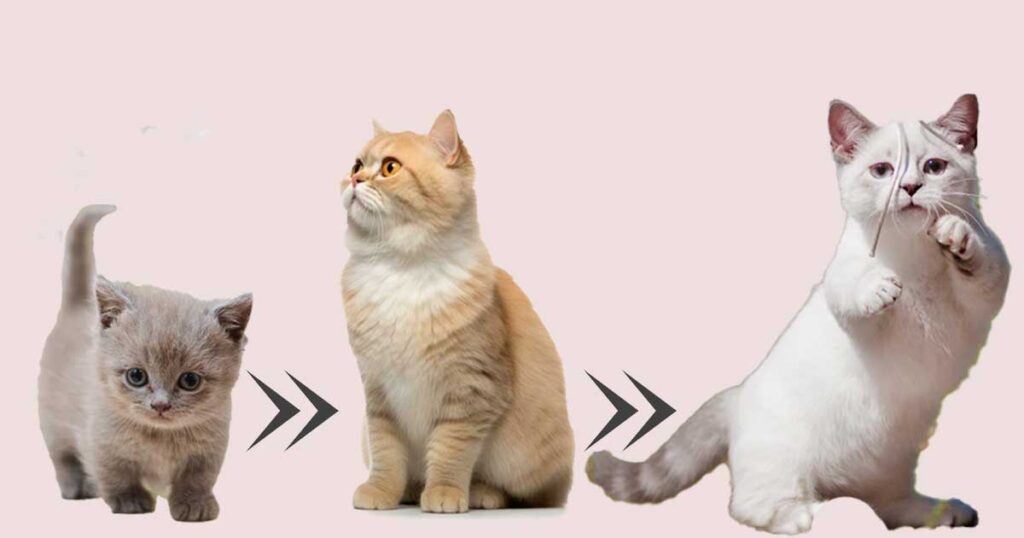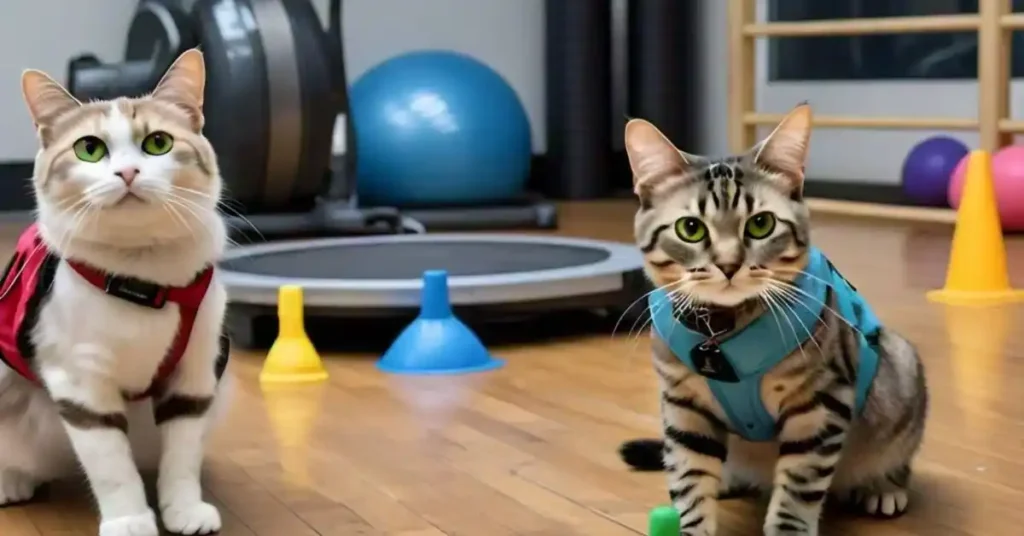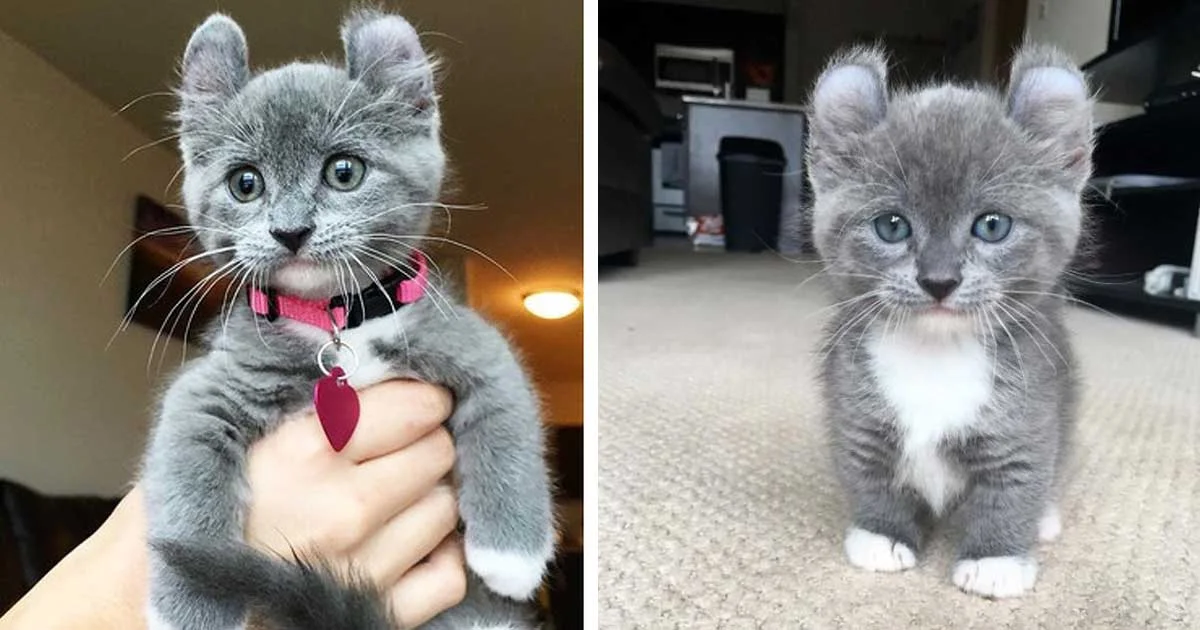Minuet cats are generally easy to train and respond well to positive reinforcement techniques, such as clicker training. Starting with basic commands like “sit,” “stay,” and “come” is effective. Using rewards like treats or praise can help reinforce good behavior.
Minuet Cats Training to walk on a leash, which can be a useful skill. Start by getting them comfortable with a harness indoors before gradually transitioning to outdoor walks. Minuet cats can be trained using positive reinforcement techniques, but they require patience and consistency.
Training Minuet cats in basic commands is a great starting point. Begin with simple commands like “sit,” “stay,” and “come.” Use positive reinforcement such as treats or praise to encourage desired behaviors. Consistency is key repeat the commands and reward your cat each time they perform correctly. This method helps reinforce the behavior and makes training sessions enjoyable for your Minuet cat.
Minuet Cat Training: A Complete Guide
Training a Minuet cat, also known as a Napoleon cat due to its short legs and compact stature, can be a fun and rewarding experience due to their affectionate, playful, and intelligent nature. Begin training early, using positive reinforcement techniques like treats, praise or play to encourage desired behaviors. Minuets are quick learners, so start with basic commands such as “sit,” “stay,” and “come,” and gradually introduce more complex tricks as they grow more confident.
Training a Minuet cat, a charming breed known for its playful, affectionate nature and short legs, can be a fun and rewarding experience. Here’s a complete guide to help you train your Minuet cat effectively:
- Start Early: Begin training as early as possible, ideally when your Minuet is still a kitten. Early socialization helps them grow into well-behaved adults.
- Positive Reinforcement: Use treats, praise, and playtime to reward your Minuet for good behavior. This breed responds well to positive reinforcement, making training enjoyable and effective.
- Basic Commands: Start with simple commands like “sit,” “stay,” and “come.” Keep sessions short (5-10 minutes) to prevent your cat from losing interest.
- Litter Training: Minuet cats are generally easy to litter train. Keep the litter box in a quiet, accessible area and clean it regularly. Reward them when they use it properly.
- Scratch Training: Provide scratching posts and toys to satisfy their natural instinct to scratch. Redirect them to these when they attempt to scratch furniture or other unwanted areas.
- Interactive Play: Engage your Minuet in interactive games like fetch or puzzle toys to stimulate their minds and keep them entertained. They are highly playful and love to be active.
- Leash Training: Minuets are often curious and may enjoy exploring outdoors. Introduce a harness and leash slowly, and reward them for wearing it. Start with short indoor sessions before venturing outside.
- Patience and Consistency: Consistency is key when training your Minuet. Reinforce behaviors regularly and be patient, as it may take time for your cat to master certain commands or routines.
By providing a structured, positive training environment and respecting their playful yet independent nature, you can build a strong relationship with your Minuet cat and enjoy a well-trained companion.
Training Basics for Minuet Cats
Training Minuet cats, known for their affectionate and playful nature, is relatively straightforward due to their intelligence and eagerness to bond with their owners. Here are some basic training tips:
- Positive Reinforcement: Use treats, praise, and affection to reward good behavior, making learning enjoyable for your Minuet.
- Start Early: Begin training when they’re kittens, as they are more receptive to learning at a young age.
- Keep Sessions Short: Minuets have a curious nature but a limited attention span, so aim for brief, engaging sessions.
- Use Consistent Commands: Be consistent with the words you use for each behavior, like “sit,” “stay,” or “come,” to avoid confusion.
- Socialize Early: Expose them to different people, pets, and environments to help them develop confidence and adapt to various situations.
- Interactive Play: Incorporate toys into training to make it fun and stimulating, such as teaching them to fetch or jump through hoops.
- Litter Box Training: Place them in the litter box after meals or naps and reward them when they use it correctly.
- Be Patient and Gentle: Minuets thrive on positive reinforcement and gentle, patient guidance, so avoid harsh discipline and focus on gradual progress.
- Provide Mental Stimulation: Use puzzle toys or treat-dispensing items to keep their minds engaged when not in training.
With a consistent, loving approach, Minuet cats can quickly learn new tricks and behaviors while strengthening the bond with their owners.
Minuet cats are a cross between the Munchkin and Persian breeds, which means they inherit a unique blend of traits. Their short legs and luxurious coats make them stand out, but their personalities are just as distinctive. Understanding their nature is crucial for effective training. Minuet cats are typically friendly, playful, and responsive to positive reinforcement, making them great candidates for training.
| Category | Details |
|---|---|
| Intelligence | – Intelligent and capable of learning tricks, such as jumping through hoops.<br>- Enjoy mental stimulation to prevent boredom. |
| Training | – Start training early, even with kittens, to familiarize them with the process.<br>- Kittens can be trained for nail trims, baths, and grooming.<br>- Use positive reinforcement to teach basic commands and tricks. |
| Bonding | – Their people-oriented nature makes them eager to bond with owners through training sessions. |
These build a foundation for more advanced tricks. Keep training sessions short, around 3-5 minutes, and do them frequently (2-3 times per day) rather than one long session. Minuets enjoy interactive play and bonding with their owners, so incorporating training into daily playtime can make it more enjoyable for them.
- Toys and teaser wands are great for this. Be patient and consistent during training.
- Minuets respond best to positive reinforcement rather than punishment. Yelling or scolding can make them shut down.
Benefits of Training Your Minuet Cat
Minuet Cats Training your is not just about teaching tricks; it’s about fostering a deeper bond and ensuring their well-being. It helps in preventing behavioral issues and enhances their mental stimulation. Minuet cats are highly trainable and can benefit greatly from regular training sessions.
Mental Stimulation
Minuets are intelligent cats that need mental stimulation to prevent boredom and behavioral issues. Training provides an outlet for their curious and energetic nature, keeping their minds active and engaged.
Stronger Bond with Owner
The positive reinforcement used in cat training helps build trust and strengthen the bond between you and your Minuet. The one-on-one interaction and rewards create a sense of teamwork and affection.
Increased Confidence
Mastering new skills through training can boost a Minuet’s confidence and self-assurance. This makes them more relaxed and adaptable to new situations.
Safer Handling
Training your Minuet to accept handling, grooming, and veterinary procedures makes these necessary tasks much easier and less stressful for both of you.
Preparing for Training
These build a foundation for more advanced tricks later. Keep training sessions short, 3-5 minutes once or twice a day when starting out. Gradually increase session length as your Minuet progresses.
Their trainability makes them charming companions. Before embarking on training sessions, it’s essential to create a calm and comfortable environment for your cat.
Treats – Have a variety of small, high-value treats on hand to reward your Minuet during training. Cooked chicken, freeze-dried meat, or commercial cat treats work well.
Target Stick – A target stick helps guide your Minuet and teach tricks like jumping. Look for one with a soft, cat-friendly tip.
Training Area – Choose a quiet, distraction-free space in your home to hold training sessions.
Set Realistic Goals
Start with basic obedience skills like “sit”, “come”, and “stay” before moving to more advanced tricks.
Be patient and go at your Minuet’s pace.
Training sessions should be short, 3-5 minutes, and positive. Focus on building a strong bond through training rather than just teaching specific behaviors.
Prepare Yourself
- Learn clicker training techniques and how to use positive reinforcement effectively.
- Familiarize yourself with common cat training methods and troubleshooting tips.
- Set aside consistent, daily training times to establish a routine.
Introduce Training Gradually
Get your Minuet comfortable with the clicker and treats first before attempting commands. Use the target stick to lure and capture desired behaviors before adding verbal cues. Gradually increase the duration and difficulty of training sessions as your Minuet progresses.
Here are some key basic training methods to get started with your Minuet:
Clicker training is an effective method for teaching Minuet cats new skills and commands. The clicker is a small device that makes a distinct sound when pressed. Pair the clicker with treats to create a positive association. For example, click and reward your Minuet cat immediately after they perform a desired action. Over time, your cat will associate the click sound with a reward, making it easier to train them.
Clicker training is an effective way to communicate with your Minuet and mark desired behaviors. The clicker makes a distinct sound that lets your cat know exactly when they’ve done something right, allowing you to reward them immediately. Start by getting your Minuet comfortable with the clicker before moving on to commands.
| Category | Details |
|---|---|
| Positive Reinforcement | – Use treats, praise, and play to reward good behavior.<br>- Avoid punishment as it can damage the bond and reduce responsiveness.<br>- Find high-value treats that motivate your Minuet and deliver them immediately after the desired behavior. |
| Short, Frequent Sessions | – Keep training sessions short, around 3-5 minutes.<br>- Practice multiple times per day to accommodate their short attention span.<br>- End sessions on a good note and always reward your cat. |
| Consistency and Patience | – Be consistent with training cues and rewards.<br>- Establish a regular training schedule as Minuets thrive on routine.<br>- Remain patient and positive; it may take time for your cat to learn new behaviors.<br>- Celebrate small successes along the way. |
| Overall Approach | – Make the training experience rewarding and enjoyable for both you and your Minuet.<br>- With time and consistency, you can teach your Minuet a variety of useful skills and tricks. |
Socialization Techniques
Socialization is an important aspect of Minuet cat training. Introduce your cat to various people, pets, and environments gradually. This helps them become well-adjusted and confident. Positive reinforcement should be used to reward good behavior during these interactions. Address any behavioral issues, such as scratching or biting, by redirecting their attention and providing appropriate outlets for their energy.
Health and Safety Considerations
During training sessions, prioritize your cat’s safety and well-being. Watch for signs of stress and adjust your training approach accordingly.
Fun Activities and Games for Minuet Cats
Keep your Minuet cat entertained with interactive games and DIY toys. Cats enjoy activities that mimic hunting behaviors, such as chasing feathers or playing with puzzle feeders.

Nutritional Considerations for Training
A balanced diet is essential for your cat’s overall health and energy levels during training. Use high-quality treats sparingly to reward good behavior and avoid overfeeding.
Consistency and Patience in Training
Consistency is key to successful training. Be patient with your cat’s progress and celebrate small achievements along the way.
Common Mistakes to Avoid
Avoid common training mistakes such as using punishment or expecting immediate results. Adjust your training techniques based on your cat’s responses and seek professional guidance if needed.
Celebrating Success: Milestones in Training
Celebrate each milestone in your Minuet cat’s training journey. Whether it’s mastering a new trick or overcoming a behavioral challenge, positive reinforcement strengthens your bond and encourages continued learning.
Conclusion
FAQs
How long does it take to train a Minuet cat?
Training duration varies based on the cat’s personality and previous experiences. It can take weeks to months to see significant progress.
What are the best treats for training Minuet cats?
Opt for small, soft treats that your cat enjoys, such as bits of cooked chicken or commercial cat treats.
Can older Minuet cats be trained?
Yes, older cats can learn new behaviors through patient and consistent training methods.
Should I use a clicker for training my Minuet cat?
Clicker training can be effective for Minuet cats, providing clear feedback and reinforcing desired behaviors.
How often should I train my Minuet cat?
Short, frequent training sessions several times a day are ideal to keep your cat engaged without overwhelming them.






